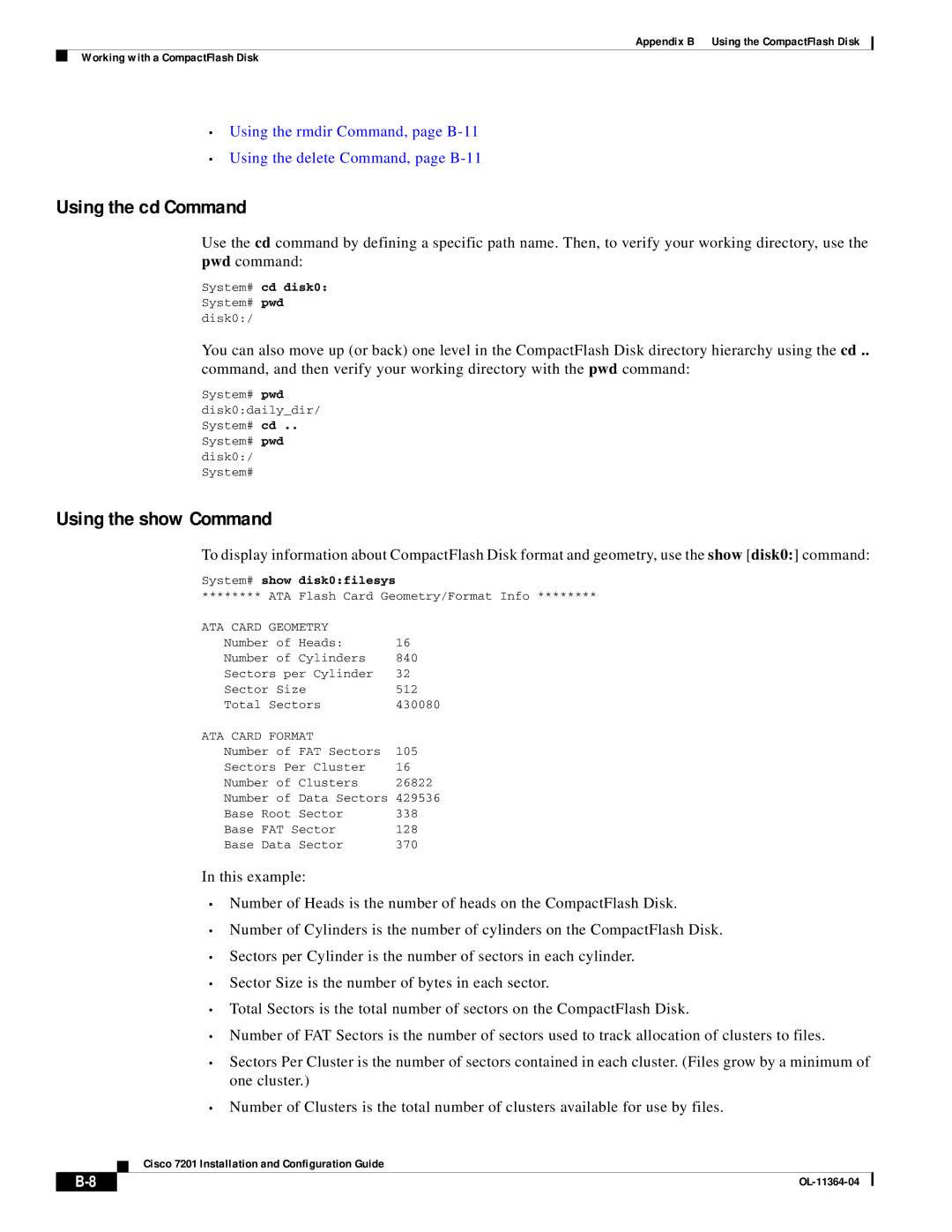
Appendix B Using the CompactFlash Disk
Working with a CompactFlash Disk
•Using the rmdir Command, page
•Using the delete Command, page
Using the cd Command
Use the cd command by defining a specific path name. Then, to verify your working directory, use the pwd command:
System# cd disk0:
System# pwd disk0:/
You can also move up (or back) one level in the CompactFlash Disk directory hierarchy using the cd .. command, and then verify your working directory with the pwd command:
System# pwd disk0:daily_dir/ System# cd .. System# pwd disk0:/ System#
Using the show Command
To display information about CompactFlash Disk format and geometry, use the show [disk0:] command:
System# show | disk0:filesys |
|
******** ATA | Flash Card Geometry/Format Info ******** | |
ATA CARD GEOMETRY |
| |
Number of | Heads: | 16 |
Number of | Cylinders | 840 |
Sectors per Cylinder | 32 | |
Sector Size | 512 | |
Total Sectors | 430080 | |
ATA CARD FORMAT |
| |
Number of | FAT Sectors | 105 |
Sectors Per Cluster | 16 | |
Number of | Clusters | 26822 |
Number of | Data Sectors | 429536 |
Base Root | Sector | 338 |
Base FAT Sector | 128 | |
Base Data | Sector | 370 |
In this example:
•Number of Heads is the number of heads on the CompactFlash Disk.
•Number of Cylinders is the number of cylinders on the CompactFlash Disk.
•Sectors per Cylinder is the number of sectors in each cylinder.
•Sector Size is the number of bytes in each sector.
•Total Sectors is the total number of sectors on the CompactFlash Disk.
•Number of FAT Sectors is the number of sectors used to track allocation of clusters to files.
•Sectors Per Cluster is the number of sectors contained in each cluster. (Files grow by a minimum of one cluster.)
•Number of Clusters is the total number of clusters available for use by files.
Cisco 7201 Installation and Configuration Guide
|
| ||
|
|
